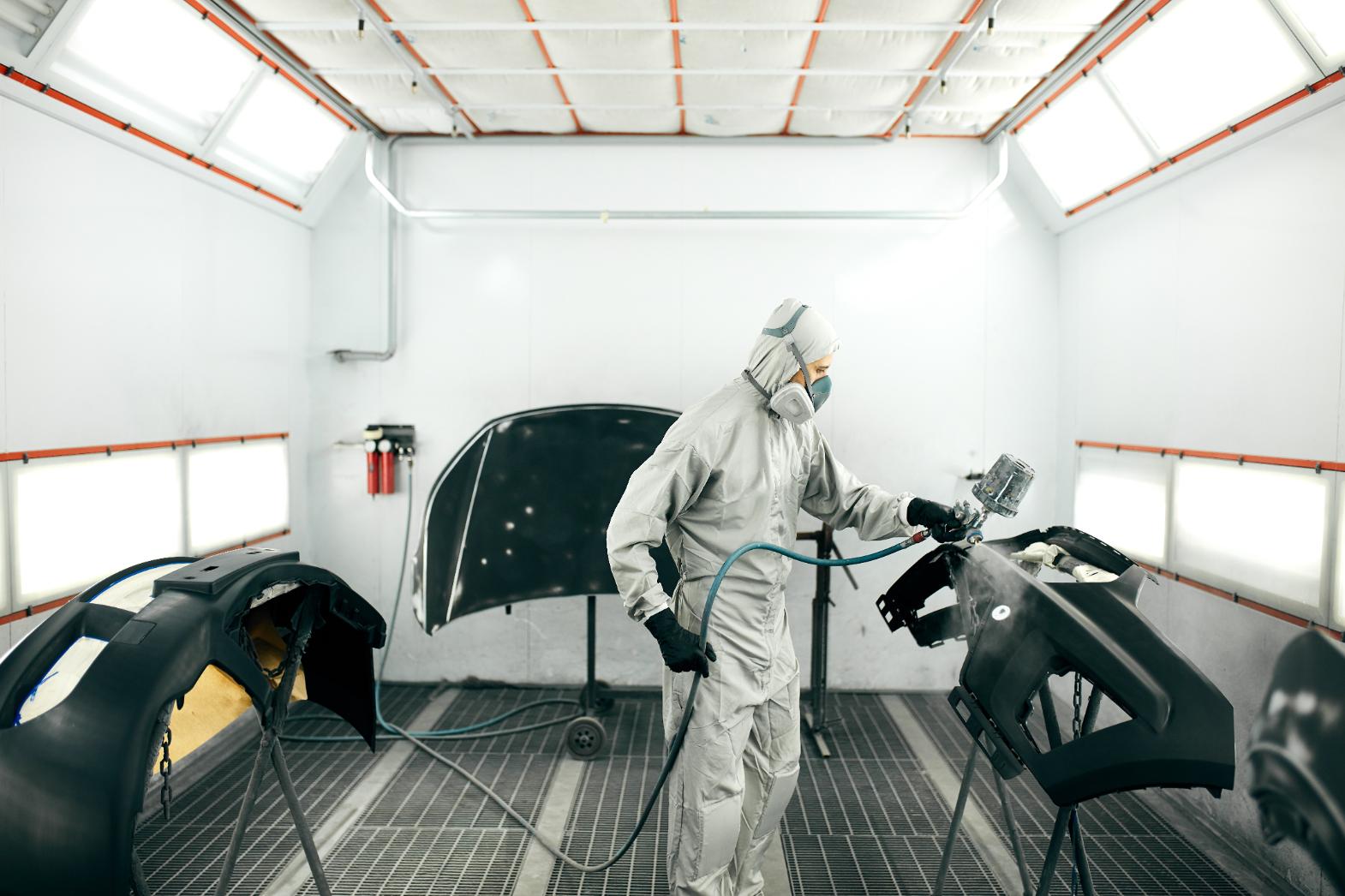Purpose of Spray Booth Filters
Spray booths are used in automotive, woodworking, industrial, and hobby painting to:
Protect operators from harmful overspray and fumes.
Keep paint finishes clean by filtering dust and contaminants from intake air.
Protect the environment by trapping paint particles before exhaust air leaves the booth.
Protect equipment (fans, ducts, motors) from clogging with paint.
Filters are consumable items and need to be replaced regularly to maintain airflow and safety.
Types of Spray Booth Filters
Most booths use a two-stage (intake + exhaust) system:
1. Intake Filters
Located at the air entry points.
Remove dust, dirt, and fibers before they reach the workspace.
Typically tacky media panels (fiberglass or polyester) that capture very fine dust.
Keep painted surfaces clean and smooth.
2. Exhaust (Paint Arrestor) Filters
Located at the booth’s exhaust side.
Trap paint overspray before it exits to atmosphere.
Common types:
Fiberglass rolls or pads – low-cost, widely used.
Polyester pads/panels – higher efficiency.
Cardboard “concertina” filters – pleated paper, high holding capacity, good airflow.
🔹 Filter Materials & Forms
Fiberglass mesh → classic paint arrestors, economical, but lower efficiency.
Polyester/tacky filters → higher efficiency for intake; tacky coating helps trap dust.
Pleated cardboard (concertina) → disposable rolls with zig-zag design, long-lasting.
Activated carbon filters (optional) → used for odor and VOC reduction.
🔹 Maintenance & Replacement
Check pressure drop: filters should be replaced when airflow resistance exceeds the booth’s recommended limit (often measured with a manometer).
Replacement frequency depends on use:
Light use → every few months.
Heavy use (e.g., auto body shops) → every 1–2 weeks.
Dirty filters = uneven airflow, poor paint jobs, and safety hazards.






